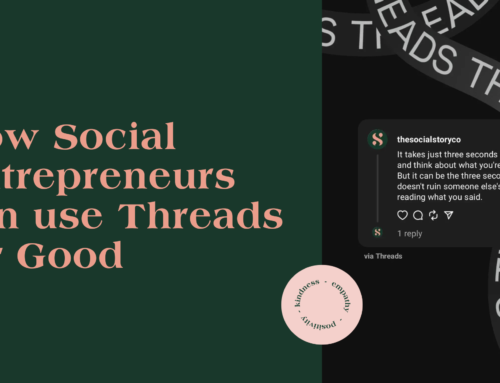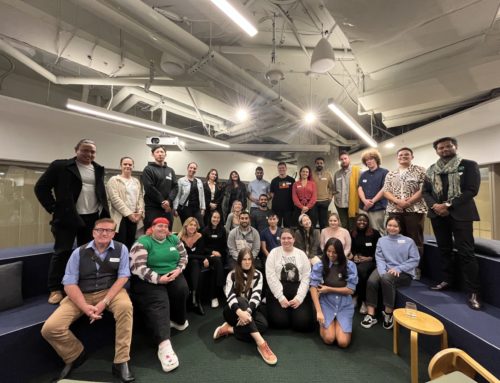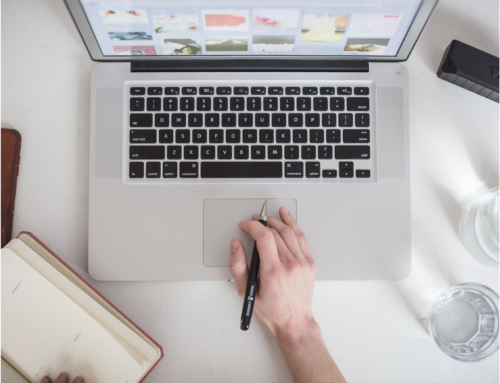Key Takeaways:
– People are using social media for the opportunities it provides to connect
– Platforms are stepping up to the plate to improve our use of social at this time
– There is still a lot of work to be done by all parties to take us beyond the pandemic and continue the positivity
It’s been said many times before but nothing can be more true: these are strange times that we are living in. We kicked off this year and decade with high hopes and optimism for what it could bring. And now, a mere three months in, we have come into a very different world, and not one anyone could have anticipated.
The world is on lockdown, fear and anxiety reign and there does not seem to be an end in sight. The COVID-19 pandemic dominates news cycles, social media and our minds. it is impossible to escape the real effects that it has had on every aspect of our lives.
And in this time of self-isolation, we have no doubt turned to our screens to find entertainment and solace. So much for the fear that social media would replace heading outside and talking to people face to face. Now it’s the only thing we can do. And yet, it hasn’t resulted in the doom of society as we know it; but offered new and creative opportunities for connection. It’s allowed people to recognise the potential of social media to be inherently social and usher us into what the digital age was supposed to be.
In short, this isolation has allowed us to finally use social media in the way it should be – as a digital extension of a healthy society.
The isolation has allowed us to finally use social media in the way it should be; as a digital extension of a healthy society.
1. Platforms are being used to stay connected
Yes, when you’re stuck inside all day, it’s no surprise that the daily use of social media has dramatically increased. But more than that, it’s the use of social media to seek out what we want beyond the mainstream media. We don’t just want the rolling counts of COVID-19 cases or global lockdowns. We are seeking out the good news, the connections and yes, the memes.
And furthermore, it’s propelled new features and apps rapidly. TikTok has been the silent climber over the past year but has truly hit the majors with a spike in interest of 47% in recent times. Instagram Live has finally found the high levels of adoption the platform was hoping for as celebrities and normal users alike flock to livestream their quarantine lives with the world…and get the audience for it. This has even brought on the revival of 2016 app, Houseparty and they’re back better, and more popular than ever.
Platforms are being used to their full potential and create lines across physical boundaries like they never needed to before.
2. People are sharing their stories and talents
But we all know quality is better than quantity and the quality of content shared has highlighted just how important the ability to share our stories on social it is. We’ve been able to see the truth of what the frontlines are like – from the people suffering from coronavirus sharing their story, to the health professionals who tell us what they really need from us (spoiler alert: it’s for us to just stay home).
It’s not just the influencers with their picture-perfect lives that are filling up our feeds. But it’s stories of real people that we should be hearing from; it’s these stories that are oftentimes overlooked in the ever-changing algorithm. This true insight into the world that we cannot and hopefully will not ever have to experience is the way that social can be used to build the empathy that we need in a time like this…and beyond.
3. People are sharing in this collective experience
As much as we are able to highlight the individual experiences of people around the world, we are also in this together. Yes, the world has experienced difficult things together, like wars but the digital age is now dealing with it with….memes and Instagram challenges. Hey, I’m not complaining. When times are weird, turning to humour can be a great resolve and I’ve been here for the memes. Bringing levity to the situation can help these uncertain times and social has been delivering in spades.
But on a serious note, initiatives such as the #StayHome sticker on Instagram have highlighted the connections social media can facilitate over more meaningful things like experiences and identities.
4. Platforms are stepping up to the plate
Social platforms have long taken the heat for not doing enough to counterbalance misinformation, trolls and hate speech on their platform. Their commitment to freedom of expression and freedom of speech has often come under fire.
But in an interview with Trevor Noah, Instagram CEO Adam Mosseri highlighted their conservative approach in this particular pandemic. Citing the severity of spreading misinformation that leads to health concerns, Instagram has taken on a more active role in curating the content online at this time.
They’ve also quickly worked to amplify the good that is coming out of this – from the Instagram lives to the #StayHome sticker.
It will be most welcome to see their sense of responsibility continue across all content across their platforms, beyond this current pandemic.
5. But the users still rule
As Adam Mosseri conceded, much of the use of social media at this time has still been user run. The push-up challenges happened organically and went viral through just the good ol’ tag and share. Users have felt an inherent desire to share their content and give back virtually. It’s taken no money or carefully crafted social media campaign, concocted in the backrooms of an agency, to get people sharing these stories on social (there just hasn’t been enough time for that!)
Ultimately, platforms will always be shaped by the needs and uses of the users themselves. The platforms are just there to amplify it and steer the users further in their efforts. Social media will always be what users make of it. And this is our chance to continue using it for good.
The Bad
And yet, with the good comes the bad. As much as this current state of social media has revealed many of the optimistic opportunities it offers, it has also highlighted many of the things we still need to see improve.
1. Separating fact from fiction
It is a reality of the internet that you just can’t believe everything you read. Unverified claims or hypotheses can quickly spread in the format of ‘facts.’ Digital literacy to see through satirical news is not up to par. And people are too quick to believe and share a good headline before reading the article or even fact checking.
This pandemic has aggravated that situation, particularly when so many things remain uncertain. How long will this last? No one knows. Does ibuprofen actually make things worse? It’s not completely clear. Did Russia really let loose lions to keep people inside?
Fixing the problem of fake news on the internet will be an ongoing battle that all parties must be more vigilant in. It’s heartwarming to see Instagram proactively direct people to trusted sources like WHO for more COVID-19 information or be proactive in taking down known false information. But will they carry on their efforts to other fake news that may be a harm to public safety?
Will people get more informed themselves on how to spot fake news and actively report it? Will we take a bit more time to check the sources before we just repost? We hope that this could be a wake-up call for all of us to be more conscious of the content we consume and believe.
2. Over-saturation
Let me preface this by saying that this is a judgement-free zone; but hands-up who’s screen time has skyrocketed during the past week? It’s ok. We’re all there right now. When there are so many more tools to entertain ourselves with – and not much else to do – it’s no wonder we’re glued to our phones more than ever right now.
But over-information and over-use have physical and psychological detriments we need to be aware of.
Look away from your screen for a second. Do it now. Blink your eyes a few time to make sure they’re lubricated properly. Look out at something natural – whether outside or a houseplant. The overuse of screens has already been a concern – particularly for young children who are growing up in this digital age, and we are yet to truly understand the longer-term effects.
Moreover, information overload – especially during an uncertain time like this – can aggravate anxiety and other underlying mental health problems. When social media has already been cited as causes for depression and isolation in active users, the combination of actual isolation cannot be healthy.
This is a timely reminder to use social media with greater intent. Yes, take a break every now and then. But we also get it. In these times, what else can you really do? So be overly conscious with what you are absorbing. Fill your feed with what you want to see – whether it’s workout inspiration, the reminder that it’s ok if you’re not feeling ok, or a fiery motivator trying to kick your butt into self improvement. And just unfollow the people who are not serving you.
But also, just take a break.
3. Difficulty returning to ‘normal’
However great social can seem in these times, we cannot ignore that it truly cannot replace just going outside. I fear that while we have been able to prove its worth when we are not allowed to go outside, when social-distancing regulations start to lift and our world returns to a new sort of normal, social will become too important in our lives.
We’ll have to have a reeducation about how going outside, connecting with people in person is still important. Social is a fantastic way to supplement society and extend how society should run beyond geographical borders and in times like these. But it should not be all we have.
What do you think? Is this the renaissance of social media that we needed to see its value? Or will it do more harm than good? Let us know in the comments below.






[…] this time of social distancing has given us a window into how social media can be used for good. And this is as good a time as any to stop, take note and reevaluate the ways we use social media […]
[…] As much as they try and parade a desire for free speech, they have had no interest in fostering a healthy discourse on the platform. And between the Cambridge Analytica scandal, the need for clear information on the pandemic and a […]
[…] a place to build community. We saw that with how we came together during COVID-19 to share good news, acts of kindness and even the memes. Even with the physical distancing, we were […]
[…] 3.8 billion people in the world use social media as of 2020 – that’s about half of the entire population. Sharing our lives through social media is second nature to us. Particularly in an increasingly globalised world it’s become an invaluable tool to keep in touch with friends and family no matter where you are. And I’ve made it no secret in my belief in the platforms as a catalyst for change. […]
[…] If this pandemic has taught us anything, this is a real opportunity for all businesses, no matter their size, to be reconsidering how they show up for their customers in more authentic and compassionate ways. And taking the lead from social enterprises isn’t just good for the word, it’s an economically sound decision to focus on what will soon be the most powerful consumer demographic of the global economy. […]
[…] the one hand, it has brought on some great positive change that was epitomised by much of what we saw in 2020 to spread good news, stories of heroes, ways to help and change that need […]